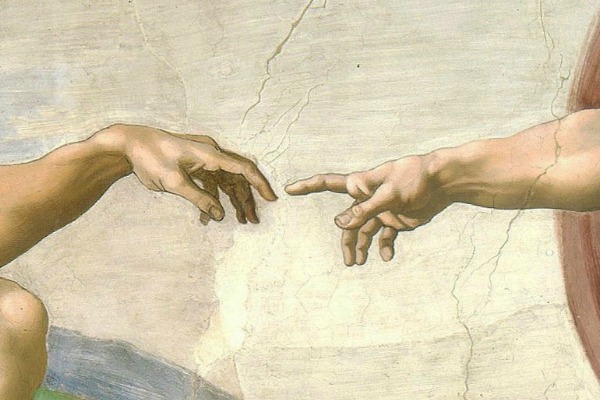
Kenan Çamurcu
This is the second of the "philosophy from the driver's seat" articles. We will examine anarcho-capitalism's project, inspired by left anarchism, to remove the state apparatus from social life, through the lens of the renowned libertarian Robert Nozick.
It's often said that libertarianism is the philosophical tradition most distant and skeptical of the idea of the state within the capitalist universe. This is right-wing anarchism, a kind of radical liberalism, or even ultra-liberalism. Robert Nozick (1938-2002), famous for grounding the abstract and utopian simplicity of anarcho-capitalism in reality, was the most prominent flag-bearer of this movement.
Robert Nozick's liberalism represents an evolutionary transitional form between distributive social justice liberalism and capitalist anarchism.
When liberalism began to signify left-wing libertarianism in America, the capital of capitalism, the libertarian faction of free-market capitalism emerged. Libertarianism is classified as anarcho-capitalism or minarchism based on its answer to the question "Is the state morally legitimate?" Minarchism, or minarchy, argues that only a minimal state is legitimate. This minimal state is something like a night-watchman state, a few steps removed from the classical liberal conception.
Nozick's state is limited to protecting citizens against contract violations, theft, fraud, and violence (Macit, p. 94). Anarcho-capitalism, however, is intolerant even of this level, which is why it's referred to as "free-market anarchism." For minarchists, the state is a "necessary evil to be endured." For anarcho-capitalists, it is an "evil to be avoided." This is a remarkably Bakuninian perspective, with Bakunin's distinction being his delegation of services to elected committees rather than to capital owners.
Since anarcho-capitalism's principle is the privatization of public services, it cannot financially, and therefore politically, constrain the populace.
From Distributive Justice to Capitalist Anarchism
The 1960s were the undisputed years of dominance for the "welfare state" and "distributive justice." This is why Robert Nozick's book, Anarchy, State, and Utopia, an intensely powerful response to this movement, was received with messianic fervor by libertarians. They treated the book as the Das Kapital of anarcho-capitalism. For them, Nozick had dethroned Rawls's A Theory of Justice, a defender of the welfare state. Nevertheless, they did not refrain from criticizing Nozick for attributing moral legitimacy to the state, even if it remained minimal. This is because legitimacy, in their view, rested solely on the ethics of rights, based on natural rights and the principle of self-ownership. The state could have no place whatsoever within this circle of legitimacy.
Nozick's response to the criticisms was essentially: A minimal state that violates no one's rights is not illegitimate. If we do not make the state an end in itself, there is no problem. If morally legitimate processes and means are employed, and things are done through the invisible hand, then liberalism is not compromised.
At this point, let's open a parenthesis and add a note that will help with comparative thinking.
While Hegel's conception of the sacred state was prevalent in Europe, his contemporary in the Muslim world, the Shi'i philosopher-cleric Sheikh Murtaza Ansari, declared the state illegitimate. According to Ansari, the right of guardianship belonged to Allah, and this right could not be manifested in the state. Likening the state's right of guardianship over the populace to a family's right of guardianship over children was false. By "state," Ansari, of course, meant the sultan, the monarch. According to Ansari, the state was merely a tool to ensure that public affairs were not left unattended (Hasani - Mirahmedi, 2019: 113-132).
The libertarian Nozick built his theory by objecting to the distributive theory of liberal John Rawls (1921-2002). This conflict within the liberal tradition is called the clash between egalitarianism and libertarianism. Their offices at Harvard were separated by just one floor. One a Brooklyn Jew, the other a Baltimore Jew, their ideas—two WASPs—were debated in the White House and the chambers of the Supreme Court (Rothenberg).
Nozick is the intellectual cornerstone of end-times libertarianism, a militant of the right's beloved "laissez-faire" idea. Rawls, on the other hand, represents democratic egalitarianism, a liberal who grants the state the authority to uplift the disadvantaged, even at the expense of other classes. The supply-side economist and conservative Jude Waninski once said, "There's always an expansion and contraction ahead of you. Always a state of tension. Like Yin and Yang. There's always a Rawls. There's always a Nozick too" (Rothenberg).
While Rawls finds the redistribution of resources just, according to Nozick, justice means that the individual does not forgo their rights for the benefit of society (Aydın, 2020: 249). Here, there is a fundamental critique of contractarians. According to Rawls, the state of nature means that equal and free individuals unite on the basis of fair cooperation and determine its conditions (Rawls, p. 6). For Nozick, however, the state of nature is individual freedom and individual rights (Nozick, p. 23).
Both Rawls and Nozick opposed the utilitarianism of Mill, one of the founding fathers of classical liberalism. But Rawls defended the distribution of equality and justice through a system of cooperation, while Nozick argued that individual rights could not be sacrificed for social utility.
Nozick opposed classical liberalism, which entrusted liberalism to the state, with anarchist capitalism. He also opposed distributive justice, which entrusted liberalism to society, with atomized individualism.
The criticisms of modernism and the individual made by Islamists in the 90s stemmed from their sanctification and glorification of the state. Their masks, adorned with designs of freedom, transparency, free market, etc., deceived everyone. In reality, they were prone to authoritarian and totalitarian actions. Liberals were also Hayekian, not Nozickian. The liberal who went to congratulate the Chilean dictator Pinochet for implementing the neoliberal program. So, it's not surprising that local and national liberals adore the current authoritarian regime.
There is no doubt that Nozick brought about a leap in liberal thought in the twentieth century. The claim that he is the most brilliant theorist of the idea of limiting the state is not an exaggeration. His unprecedented update to the theory that sees natural rights as the fundamental criterion of legitimacy is unparalleled. It is also clear that he successfully demonstrated that the legitimacy of the state and its activities needs to be proven.
But let's not forget to note that Nozick later disavowed his own ideas and stated that he was no longer a libertarian (Beriş, 205; quoted from Borovalı). In an August 1977 interview, he would say that he was "reluctantly dragged" into libertarianism (Zlabinger). Furthermore, in his book The Examined Life, he explained that he had changed a few of his ideas on taxation (Hendricks).
Let's Meet Nozick
Nozick was born in Brooklyn in 1938 to an Ashkenazi Jewish family. He passed away in 2002 at the age of 64 from stomach cancer. In his youth, he joined the youth wing of the American Socialist Party. In 1960, he founded the Columbia chapter of the Students for Industrial Democracy. Later, his political views changed, and he gravitated towards radical liberalism.
Seventeen years later, in an interview, when asked, "Do you respect Marx as a philosopher?" he would reply, "Not really. No" (Zlabinger). He worked at Harvard University until his death.
He gained fame with his book, Anarchy, State, and Utopia (1974), written as a response to Rawls's A Theory of Justice (1971). The book received the National Book Award in Philosophy and Religion in America. His work sparked debate among liberals and the opposing camp alike.
The academic Murat Borovalı, who translated Nozick's book, describes the debates caused by Nozick as "throwing the libertarian bomb into the academic world and fleeing."
Despite making a strong defense of individual rights in his book, he was criticized for not delving into the philosophical foundation of these rights. This was a significant flaw for a theorist. Indeed, he himself admits this deficiency in the book's preface: "The book does not offer a complete theory concerning the moral basis of individual rights." It was, of course, the difficulty of the task that forced Nozick to commit this deliberate flaw. He hoped to be excused by explaining that difficulty.
He stated: "For a moral theory to be expressed entirely correctly, including a full expression of the things that form its basis, a comprehensive presentation is required, and this is a task to be performed at another time. This task is so vitally important (its non-fulfillment creates a great void) that saying we are here following the respected tradition of Locke, who was far from giving a satisfactory explanation regarding the status and basis of the law of nature in his Second Treatise, does not bring much relief" (Nozick, 2006: 37).
Only Nozick's Anarchy, State, and Utopia has been translated into Turkish. The first edition of the book was published in 2000 by İstanbul Bilgi University. The second edition was released in 2006.
His untranslated books include: Philosophical Explanations (1981 Harvard University Press), The Examined Life (1989 Simon & Schuster), The Nature of Rationality (1993 Princeton University Press), Socratic Puzzles (1997 Harvard University Press), Invariances (2001 Harvard University Press).
One: In Summary, What Does Nozick Say?
Nozick, following Locke, advocated for the state of nature and natural rights. According to him, rights are not artificially created later. Individuals participate in social organizations with their natural rights. This is based on the principle of self-ownership. The right to self-ownership is the source and foundation of all rights. Just as a person owns their body, they also own the labor and time it produces, and indeed, the life that encompasses all of it. This is a right and authority of unlimited, complete control.
The point where Nozick diverges from Locke is this conclusion. Locke had placed limitations on an individual's sovereignty over themselves. For instance, a person cannot enslave themselves, end their life, etc. For Nozick, however, the sole moral rule is consent. Therefore, he attributes Locke's limitation on the principle of self-ownership to paternalistic behavior. Yet, two people can establish a master-slave relationship through a contract. There is nothing immoral in this form of relationship (Uslu, p. 146).
Classical liberalism also declares the condition of "not violating another's rights" as the sole limitation. But when it comes to exemplifying freedoms—for instance, the freedom to be a slave—it is not as courageous as Nozick.
Let's open a parenthesis here: The self-ownership thesis is an individual conception that unites Feminism (a political position of the left) with Marxism and ultra-right libertarianism. The feminist slogan "My body, my choice" and the Marxist motto "labor belongs to its owner" both originate from the liberal principle of "self-ownership." There is permeability between the two sides. They are not two separate worlds as commonly thought.
Nozick opposed the thesis of left anarchists that the state is both necessary and immoral. According to him, the minimal state is morally defensible and legitimate. However, any state more extensive than the minimal state is illegitimate. He derived this idea from the 17th and 18th-century theories of the "state of nature" and "social contract." But he diverged from them when designing the transition to the political society stage. He did not accept the model advocated by contractarian theorists, where "the state suddenly emerges through a social contract." According to him, the state would come into existence gradually, through a process akin to Adam Smith's "invisible hand" (Nozick, 2006: 49-55).
In other words, "Anarchy is replaced by a minimal state or a group of geographically distinct minimal states through the influence of spontaneous groupings, mutual protection units, division of labor, market pressures, economies of scale, and rational interests" (Nozick, p. 48).
In this land, there are those who overvalue the term "social contract." Yet, the idea of a contract is nothing more than crude engineering imposed on society. It is overly authoritarian, and freedom can never emerge from it. When discussions about a "new constitution" begin, and they present the issue with the concept of a "new social contract," they are actually unaware that they are talking about building a new nation. However, the new one will be afflicted with the same problems, illnesses, defects, and diseases as the old. For this same reason, it is also wrong to call the document of the pluralistic public sphere model in the Prophet's Medina, which is the heir of the Sparta and Athens examples, and the phenomenon it created, the "Medina contract." Because the Prophet did not create a new nation with a written document.
Nozick explained the emergence of the minimal state with a timeline related to the protection of individual rights: How will individuals protect their natural rights? Through associations they form with friends or relatives. But for reasons of efficiency, effectiveness, and various practical considerations, they will prefer to obtain such services from private protection agencies. Thus, various protection agencies will emerge in a certain geographical area, having different protection policies and competing with each other for clients (Nozick, 2006: 43).
It is inevitable that the division of services among companies will create some problems. At this stage, the "invisible hand" will intervene and create a strong tendency for all protection services to be centralized in a single company.
This schema forms the nucleus of the minimal state.
Recall that Nozick viewed Locke's transfer of authority to the state via contract as a limitation of freedom. Well, anarcho-capitalists will challenge Nozick on his "rights protection model," arguing that he is doing the same thing by transferring the protection of individual rights to a company.
One of the anarcho-capitalists' objections also pertains to Nozick's evolutionary design, which legitimizes the minimal state. After all, how do we know the process will necessarily unfold this way?
Two: Maximum Individual, Minimum State
In Nozick's libertarian vision, there are two conditions for an organization to be considered a state: 1) It must possess a monopoly on the use of force within a defined geographical area. It must authorize who can and cannot use force and punish those who use it without permission or authority. 2) It must provide protection services to everyone within that geographical area (Nozick, 2006: 57).
Nozick believes that a state beyond this would interfere with the individual's sphere of freedom. Therefore, according to him, granting the state a redistributive role that favors the disadvantaged contradicts freedom. Furthermore, any demand for equality takes the state outside the bounds of its legitimacy. There are income and wealth inequalities among people. Any attempt by the state to rectify these inequalities is an unacceptable intervention (Macit, p. 96). Gains legitimately acquired by individuals cannot be seized to provide equal opportunities for others (Nozick, 2006: 303).
Nozick argues that the state should be minimized for the individual to achieve freedom and realize their own utopia, but this does not imply strengthening society against the state or thereby securing individual freedom. According to him, society should be as minimal as the state. Inspired by this idea, Margaret Thatcher, the mother of neo-liberalism and former Prime Minister of the UK, famously said, "There is no such thing as society. There are individual men and women, and there are families."
In other words, as long as an individual does not violate another's rights, they manage their own life as they wish. Beyond what is good for individual persons, there is no collective good for which sacrifice is required. What is good for the individual cannot be sacrificed for the sake of the social whole. Forcing an individual to make sacrifices for society simply means using them for the benefit of other people. There can be no reason to justify sacrificing some for others. There are different individuals with different lives, and no one's life can be sacrificed for others.
The principle of self-ownership grants a person the right to life, liberty, and property, as well as the right to protect them. For example, a person can enter the house of a thief who stole their belongings and forcibly take back what is theirs. This is because the aggressive thief is considered to have lost the inviolability of their right by violating the individual's right. The person who violates a right should lose their own right as punishment, proportionate to the violation. Violation of a right legitimizes coercion.
The only legitimate way to compel a person to do or not do certain things against their will is if that person is a rights violator. This condition, which legitimizes coercion or the use of force, also applies to states. However, Nozick is aware that there is a problem to be solved here. The question is: A rights violation is punished; but can a risky action, which has the potential to violate rights, be prohibited?
Nozick believes that such a prohibition contradicts freedom and is therefore a violation of rights. Individuals will be punished with a prohibition for a right they might never violate (Nozick, 2006: 117).
He provides an example: "For instance, an epileptic person might drive a car throughout their life without harming anyone. Prohibiting this person from driving might not even reduce the harm seen by others. In our car-dependent society, prohibiting anyone from driving to reduce the risk to others would put that person at a serious disadvantage. Finding remedies for these disadvantages would be costly (such as hiring a driver or taking a taxi)" (Nozick, 2006: 118).
Nozick's solution to this problem is the compensation system. The compensation intended here is not to redress the victim's harm. Rather, it is the principle that one must compensate to be able to prohibit the action. If you have the right to prohibit risky activities, you don't pay compensation for something you have a right to. But if you don't, you have to pay compensation for unjust prohibition. In this case, the best course of action is to give up this activity to avoid such an obligation (Nozick, 2006: 123).
Prohibiting risky actions becomes legitimate only if those who benefit from this prohibition, i.e., those who are freed from the risk, pay compensation.
Nozick also proposes a method for calculating the compensation required for prohibiting a right. Returning to the example of prohibiting an epileptic person from driving, the compensation amount would be the difference between the epileptic person's expenses for driving before the prohibition and their taxi expenses. If those who do not wish to assume the risk of this action pay this compensation to the epileptic person, they can legitimately gain the right to prohibit the action (Nozick, 2006: 156).
Three: Libertarian Ethics Versus Utilitarian and Entitlement Justice
According to Rawls, the income disparities arising from individuals' innate talents lead to injustice. Therefore, intervention is necessary. Rawls states here that the income individuals earn through their natural talents can only be just to the extent that it benefits the most disadvantaged individuals (Rawls, 2017: 93).
Nozick opposes this template of justice with the example of the professional basketball player Wilt Chamberlain. In a situation where we envision equal distribution for everyone, people give a portion of their money to the famous basketball player Chamberlain, whom they enjoy watching and prefer to spend money to watch. Nozick describes this situation as an institutional arrangement where people put 25 cents of the ticket price for a game into a separate box for Chamberlain.
Nozick's question is: In many situations where people enjoy doing something and voluntarily choose it, why shouldn't it be just for this basketball player to earn above average income by virtue of people choosing to watch him? (Nozick, 2006: 216-17).
This example emphasizes, on one hand, the principle that individuals should be free in their choices, and on the other hand, it aims to show that income obtained through natural talents is not unjust as long as it is based on choices and consent. There is an exchange here, and both parties are exercising their right to free exchange.
In a situation where equal distribution is initially regulated and the game ticket price is determined on this basis of equality, if the 25-cent exchange between Chamberlain and his spectators does not affect the established equality, can we complain about the injustice of the trade between the two individuals? (Nozick, 2006: 217).
In a free society, different people control different resources. Voluntary exchanges and individual actions result in new acquisitions. In such a society, the distribution of shares is no different from the distribution of spouses where individuals choose whom to marry among themselves. The ultimate outcome is something produced by many individual decisions that different individuals involved are authorized to make (Nozick, 2006: 204).
Thus, according to Nozick, the existence of a central authority distributing or controlling power indicates that justice cannot be achieved.
The epithet "anarchist of new capitalism" attributed to Nozick is actually apt. This is because what he advocates aims to open an unimpeded space for capitalism. He must have therefore opposed reformist/revisionist liberals like Rawls, who, alarmed by the welfare inequality that disrupts social balances, try to put capitalism in order.
Nozick's failure to present a theory of ethics is the most criticized aspect of his work.
According to the Rawlsian Thomas Nagel, Nozick put forward a defense of libertarianism that had no theoretical basis. He left it so that he presented no fundamental thesis and provided no grounding for the premises upon which his entire theory was built, yet he arrived at many specific and ambitious conclusions.
As an anarcho-capitalist, Murry Rothbard also focuses his criticisms of Nozick on his defense of the minimal state. He criticizes Nozick for having no argument regarding the existence of rights. According to him, Nozick, who does not have an understanding of rights based on the universe or human nature, is a Kantian intuitionist. He grasps rights as a simple emotional intuition (Uslu, pp. 149-150).
Nozick, at the end of his book, acknowledges that the issue is not merely about escaping the limitations of the state. People can adopt various limitations that the state cannot legally impose on them. Although the framework is libertarian and "laissez-faire," communities may not prefer this. Therefore, the features of the framework do not need to dominate individual communities. There is also a possibility that no capitalist institution functioning within a "laissez-faire" system will emerge (Nozick, 2006: 401).
Translated by Gemini
REFERENCES
- Aydın, Aysun, “Rawls ve Nozick, Bireysel Haklar, Tercihler ve Yetenekler Üzerine”, Kilikya Felsefe Dergisi, Sayı 2, Ekim 2020, pp. 247-262
- Beriş, Hamit Emrah, “Çağdaş Liberalizmde Farklı Yönelimler: John Rawls ve Robert Nozick”, Liberal Düşünce, Güz 2002, pp. 197-215
- DMY Felsefe, “Robert Nozick Kimdir?”, https://www.dmy.info/robert-nozick-kimdir/
- Hasani, Ferzad - Mirahmedi , Mansur. (Winter 2019). “Hudud-i İhtiyarat-i Hukumeti-yi Fakih der Nigah-i Tatbiki be Ara-yi Siyasiy-yi Şeyh Murtaza Ensari ve Murtaza Mutahhari”. Siyaset-i Mütealiyye. Year: 6, Issue: 23. pp. 113-132.
- Hendricks, Scotty, “Why Robert Nozick was a libertarian”, Big Think, August 13, 2018, https://bigthink.com/politics-current-affairs/why-robert-nozick-was-a-libertarian/
- Internet Encyclopedia of Philosophy, “Robert Nozick: Political Philosophy”, https://iep.utm.edu/noz-poli/
- Year 7, Issue 28, April-May-June 2011, pp. 85-97
- Nozick, Robert, Anarşi, Devlet ve Ütopya, İstanbul Bilgi Üniversitesi Yayınları, 2nd Edition, 2006, Trans. Alişan Oktay.
- Rawls, John, Bir Adalet Teorisi, Phoenix Yayınevi 2017
- Rothenberg, Randall, “Philosopher Robert Nozick vs. Philosopher John Rawls, Give me liberty or give me equality”, Esquire, March 1, 1983
- Uslu, Cennet, “Robert Nozick: Anarko-Kapitalizme Karşı Minarkizm”, Liberal Düşünce Dergisi, issue: 48, pp. 0-169, Oct. 2007
- Zlabinger, Albert, “An Interview with Robert Nozick”, Dec 1st, 1977, Libertarianism, https://www.libertarianism.org/publications/essays/interview-robert-nozick





0 Comments